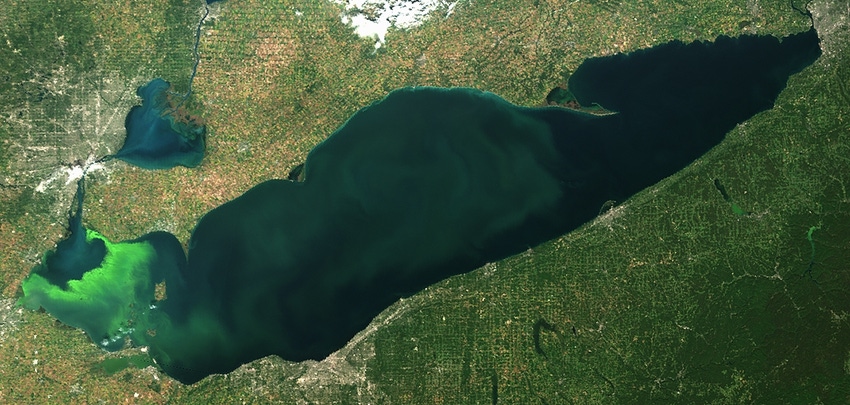Ongoing research efforts addressing how to reduce bloom.

Experts are predicting that Lake Erie’s harmful algal bloom this summer will be smaller than last year’s, which was the third largest ever recorded, but it will be larger than the mild bloom in 2016.
The bloom is expected to measure 6.0 on the severity index but could range between 5.0 and 7.5, according to a forecast issued July 12 by scientists from the National Oceanic & Atmospheric Administration (NOAA) and The Ohio State University’s Ohio Sea Grant program.
The severity index is based on a bloom’s biomass — the amount of its harmful algae — over a sustained period. Lake Erie’s largest blooms, in 2011 and 2015, were 10.0 and 10.5, respectively. Last year’s bloom had a severity of 8.0.
In recent years, visible blooms have not appeared until late July or early August. Microcystis, the cyanobacteria that form the bloom, will typically start growing when water temperatures reach 65-70°F, usually in mid-June. This year, the western basin warmed almost two weeks earlier than usual, reaching 70°F during the last week of May, leading to the appearance of a small bloom.
“This early start does not change the forecast severity, because the bloom is determined by the amount of phosphorus that goes into the water,” NOAA oceanographer Dr. Richard Stumpf said. “Close attention to the weekly bulletins will be important through July and August to find the best places to enjoy the lake.”
Ohio Sea Grant director Chris Winslow said research efforts across the state have helped area communities prepare for blooms of this size; those efforts range from developing new technologies to keep toxins out of drinking water to assessing the human health impacts of harmful toxins in algal blooms.
“While continued efforts are still needed to reduce nutrient runoff and, therefore, the size of future harmful algal blooms, Lake Erie residents and visitors will still be able to safely enjoy much of the lake during bloom season,” he noted.
Lake Erie’s harmful algal blooms, concentrated in its western basin, can turn the water green, can hurt tourism-dependent businesses and recreation and can sometimes produce toxins that pose health risks to people, especially if the toxins get into the drinking water. Excessive phosphorus — a nutrient present in fertilizers and manure that can be washed from farm fields by rain — is a major cause of the blooms.
NOAA’s forecast was based on factors including spring rain and phosphorus runoff within the lake’s watershed, water temperatures in the lake and rainfall expected through the rest of the summer and fall. Twice-weekly updates to the forecast are available at go.osu.edu/bloomforecast.
W. Russell Callender, assistant administrator for NOAA’s National Ocean Service, said NOAA “continues to develop tools that provide early-warning systems for harmful algal blooms, which help visitors and the community make better-informed decisions about recreation activities.”
He said Lake Erie is a driver of northern Ohio’s economy, and “we’ll keep working with our partners to bring the most accurate forecasts for the region.”
About the Author(s)
You May Also Like

.png?width=300&auto=webp&quality=80&disable=upscale)

